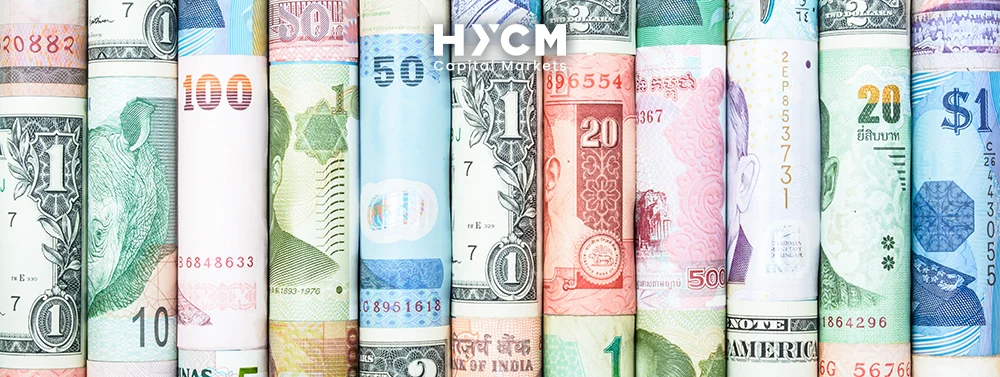


Quote Currency Explained: Key Forex Trading Term
Terminologies
Understanding how currency pairs are structured is fundamental—and a big part of that structure is the quote currency. While the base currency is the first currency in a pair, the quote currency is the second, and it plays a vital role in determining how exchange rates are interpreted and how trade values are calculated.
Every currency pair in the forex market shows the value of one unit of the base currency in terms of the quote currency. For example, in the pair EUR/USD = 1.1000, the quote currency is the U.S. dollar, and the quote means that one euro (the base) is worth 1.10 U.S. dollars (the quote).
Why is this important? Because the quote currency not only helps traders determine trade values, but also affects profit and loss calculations, pip values, and the true cost of a trade. Without understanding how the quote currency functions, traders risk misinterpreting market data and executing poor trades.
In this article, we’ll explore everything you need to know about the quote currency—from how it works in a pair to its influence on trade execution and performance. Let’s begin by taking a closer look at how the quote currency fits into the structure of currency pairs.
Understanding Quote Currency in Currency Pairs
In any forex pair, the quote currency is the second currency listed. It is used to express the value of the base currency, which is the first in the pair. Together, the base and quote currencies define the price relationship that traders use to make decisions.
Let’s use a simple example:
EUR/USD = 1.1000
Here:
-
EUR is the base currency.
-
USD is the quote currency.
-
The rate tells us that 1 euro = 1.10 U.S. dollars.
In other words, the quote currency shows how much of that currency is needed to buy one unit of the base currency. If the price rises from 1.1000 to 1.1200, it means the euro has strengthened relative to the U.S. dollar—or the dollar has weakened against the euro.
The quote currency also determines the directional interpretation of a trade. If you go long (buy) on EUR/USD, you’re buying euros and selling dollars. If you go short (sell), you’re selling euros and buying dollars. In both cases, your profit or loss is realized in the quote currency, since it is the currency used to value the position.
Another key point: when your trading account is denominated in the same currency as the quote currency, it simplifies your profit/loss tracking and margin calculations. For instance, if your account is in USD and you're trading EUR/USD, your profits or losses will already be in your account currency, eliminating the need for currency conversion.
In short, the quote currency is the unit of account in any trade, shaping how much you pay, what you risk, and what you earn.
Role of the Quote Currency in Forex Pricing
The quote currency is more than just a reference—it actively determines how traders calculate costs, measure profits, and assess market movement. Understanding how it functions within forex pricing is essential for making informed trading decisions.
1. Determining Trade Value
The quote currency tells you how much of it is needed to buy one unit of the base currency. If GBP/USD is trading at 1.2500, it means you’ll need 1.25 U.S. dollars (quote currency) to buy one British pound (base currency). This exchange rate defines every transaction in the forex market.
2. Calculating Pip Value
Pip value is also tied to the quote currency, especially in pairs where the quote is USD. In such cases, pip values are fixed for standard lot sizes:
-
1 pip in a standard lot (100,000 units) is $10.
-
1 pip in a mini lot (10,000 units) is $1.
-
1 pip in a micro lot (1,000 units) is $0.10.
However, for pairs where the quote currency isn’t the U.S. dollar, traders may need to convert pip values into their account currency based on current exchange rates.
3. Influencing the Spread
The spread—the difference between the bid and ask price—is expressed in the quote currency and represents the cost of opening a trade. For instance, if EUR/USD is quoted as 1.1000/1.1002, the 2-pip spread equals $20 per standard lot.
Tight spreads in highly liquid quote currencies like USD, EUR, and JPY make them cost-effective for frequent trading. Exotic quote currencies, however, often come with wider spreads and higher costs.
4. Profit and Loss Accounting
When a trade is closed, profits or losses are settled in the quote currency. This means if you earn 50 pips on a EUR/USD trade with a standard lot, your profit is $500. If your account is not in the quote currency, this amount is converted based on prevailing rates.
Understanding how the quote currency functions in pricing and valuation helps traders better manage risk, calculate returns, and control trade costs.
Real-World Examples of Quote Currencies
To fully appreciate how quote currencies function in forex trading, let’s explore how they behave in different currency pairs and what their presence reveals about pricing, volatility, and trade logic. Quote currencies can vary in strength, liquidity, and role depending on global economic conditions and the pair they appear in.
1. EUR/USD – Quote Currency: USD
The U.S. dollar is the most frequently used quote currency in the world. In EUR/USD, a quote of 1.1000 means 1 euro = 1.10 U.S. dollars. If this rate rises, the euro is gaining strength relative to the dollar; if it falls, the dollar is strengthening.
Since most forex accounts are funded in USD, having USD as the quote currency simplifies trade calculations and P&L accounting.
2. USD/JPY – Quote Currency: JPY (Japanese Yen)
In this pair, the quote currency is the Japanese yen, which is unique because it is quoted with two decimal places instead of four. A rate of 145.00 means 1 U.S. dollar = 145 yen.
Here, the trader is watching the value of the yen to determine if the USD is rising or falling in comparison. A fall in USD/JPY would indicate yen strength and dollar weakness.
3. GBP/CHF – Quote Currency: CHF (Swiss Franc)
In GBP/CHF, if the price is 1.1200, it means 1 British pound = 1.12 Swiss francs. If CHF strengthens, the price will decrease, indicating that it takes fewer francs to buy a pound.
This pair may attract traders during periods of global uncertainty, as CHF is considered a safe-haven currency.
4. EUR/TRY – Quote Currency: TRY (Turkish Lira)
In this exotic pair, the quote currency is from an emerging market economy. A quote of 32.5000 means 1 euro = 32.5 Turkish liras.
Exotic quote currencies like TRY tend to be highly volatile, and spreads can be significantly wider. Traders need to be cautious with liquidity, slippage, and risk exposure when trading such pairs.
5. AUD/NZD – Quote Currency: NZD (New Zealand Dollar)
In this regional cross pair, both currencies are from the Asia-Pacific region. A rate of 1.0700 indicates 1 Australian dollar = 1.07 New Zealand dollars.
These pairs often move based on regional economic events and trade relationships, making the quote currency an indicator of relative economic strength.
Each example highlights how the behavior of the quote currency influences trade logic, pricing volatility, and overall pair dynamics. Traders must pay close attention to economic conditions and interest rates affecting both currencies in the pair—but particularly to the movement of the quote currency, since it directly defines price expression and trade valuation.
Why the Quote Currency Matters for Traders?
For traders, the quote currency is not just a passive part of a pair—it’s a core factor in trade planning, execution, and management. Mastering its function helps traders improve accuracy, consistency, and risk control.
One of the biggest reasons the quote currency matters is that it determines the currency in which profits and losses are realized. If your account is funded in the quote currency, such as trading EUR/USD with a USD account, you can immediately see your profit or loss without needing conversions. This simplifies performance tracking and money management.
The quote currency also shapes your cost structure. Spread, pip value, and even swap or rollover charges are all calculated in the quote currency. A misunderstanding here can lead to incorrect trade sizing or unanticipated costs, especially when dealing with exotic or less liquid currencies.
Additionally, knowing how the quote currency reacts to global economic events helps traders align their trades with stronger fundamentals. For instance, if you anticipate strength in the U.S. dollar, you might prefer to sell pairs where USD is the quote currency or buy pairs where USD is the base.
Overall, being quote-currency literate means you’re not just guessing at market movements—you’re interpreting them with full clarity and confidence.
Conclusion: Mastering the Quote Currency Concept
The quote currency plays a pivotal role in forex trading—it determines how exchange rates are read, how trades are valued, and how profits and losses are calculated. As the second part of every currency pair, it directly influences pricing, trade execution, and even the cost of doing business in the forex market.
Whether you're trading majors like EUR/USD, minors like GBP/JPY, or exotics like USD/ZAR, understanding the quote currency helps you make smarter, more informed decisions. It ensures you’re calculating trade size, risk, and potential reward correctly, while also interpreting market movements with clarity.
For every trader—especially beginners—grasping the mechanics of quote currency is a crucial step toward becoming fluent in forex terminology. With this knowledge, you’ll be better equipped to navigate currency pairs, track performance, and build a strategy grounded in precision and awareness.
Frequently Asked Questions on Base Currency
Does the quote currency determine trade value?
Yes, it shows how much is needed to buy one unit of the base currency.
Are profits and losses calculated in the quote currency?
Yes, P&L is typically realized in the quote currency before being converted to your account currency if needed.
What is the quote currency in forex trading?
The quote currency is the second currency in a pair, representing the amount needed to buy one unit of the base currency.
Why is the quote currency important?
It determines the pricing, cost structure, pip value, and profit/loss outcome in forex trades.
What’s the difference between a base currency and a quote currency?
The base currency is what you are buying or selling; the quote currency tells you how much of it is needed to make the purchase or sale.
Why choose a pair with your account currency as the quote currency?
It simplifies profit/loss calculations and eliminates the need for conversion at trade closure.



